
Nursing is a tough enough profession under any circumstances, but during WWII in Germany it was made even more difficult by the Nazi Party taking control of the German Red Cross.
On the one hand, this movement’s members were occupied with treating the common soldier in the most devastating conflict of the 20th century; their assistance was invaluable in saving the lives of thousands of German troops. Yet on the other hand, propaganda frequently glossed over their involvement in the war crimes of the Third Reich.
Read on for 10 fascinating German Red Cross recruitment posters – and some of the historical reality lying behind them.
10. “War Relief for the German Red Cross,” 1941
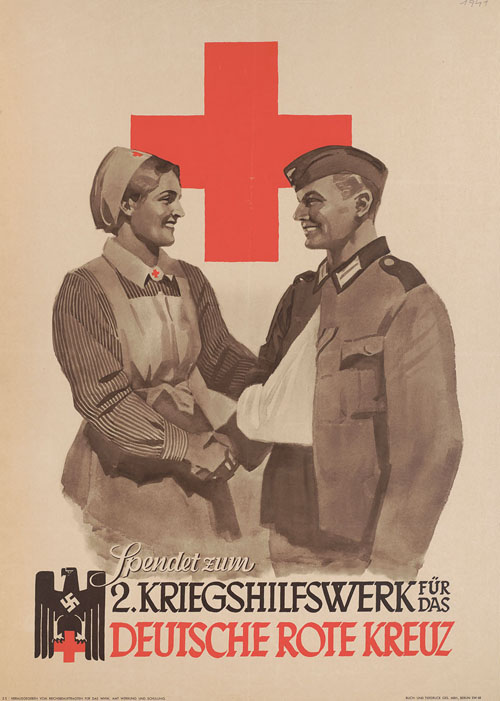
This first poster advertises war relief for the German Red Cross, or “Rote Kreuz,” otherwise known as the DRK. This was the major German nursing organization during WWII. The DRK’s origins lay in Germany’s colonial empire, but the National Socialist Party sought to control it in 1933, and it was officially under control of the Nazi Party by 1938.
One of the major changes made to the DRK was the appointment of physician Ernst Robert Grawitz – who was a member of the SS Reichsarzt – as director of the organization. The DRK’s new masters also gave it numerous connections to the SS, partly due to there being overlapping personnel in leadership positions.
9. “War Relief for the German Red Cross – Your Thanks,” 1941
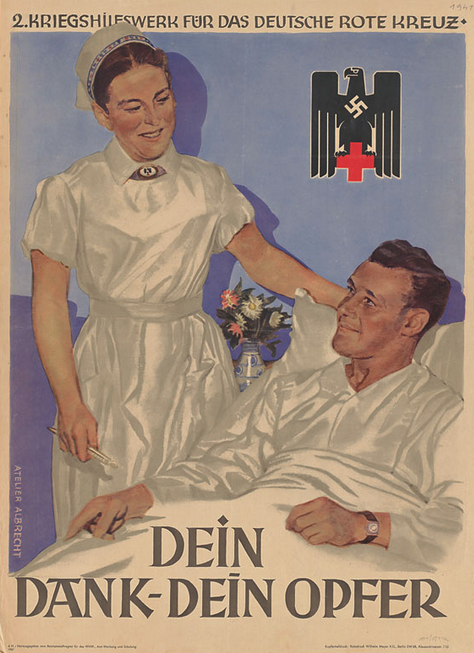
This next poster gave thanks to those who donated to the German Red Cross. One interesting element is the combination of the Nazi eagle and the symbol of the Red Cross. The international symbol was co-opted by the Nazi regime and combined with its own emblems on many different posters.
The Swastika was, of course, an extremely prolific symbol used by the Nazis, yet it has been found on various German artifacts dating as far back as the Iron Age. What’s more, the figure has appeared in various cultures throughout history. It was Hitler’s idea to combine it with the colors of the old German Empire to create an iconic symbol of glory for the party.
Following the end of WWII, the organization as run by the Nazi Party was disbanded. As a result, it was established, once more, as the Red Cross we recognize today.
8. “Donate to the German Red Cross War Relief,” c. 1941
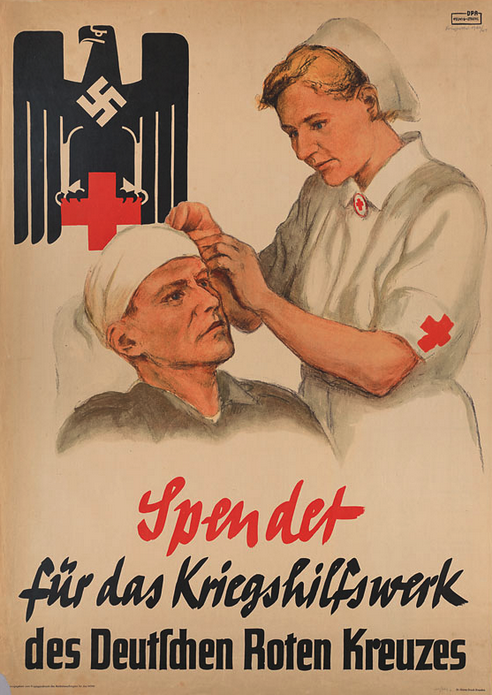
Here, we have a poster that depicts a German nurse caring for a patient with a head wound. At the beginning of WWII, when the German army made its way across Europe, they suffered fewer casualties. For example, during the Battle of France in May 1940, there were around 163,650 German casualties compared to over two million for the Allies.
However, this situation changed when Hitler set his sights on Russia. The German army suffered over one million casualties in its first year of the campaign. And medical care would have been difficult for both sides due to the freezing temperatures.
7. “Did You Help Protect the Wehrmacht in the German Red Cross?” Date unknown
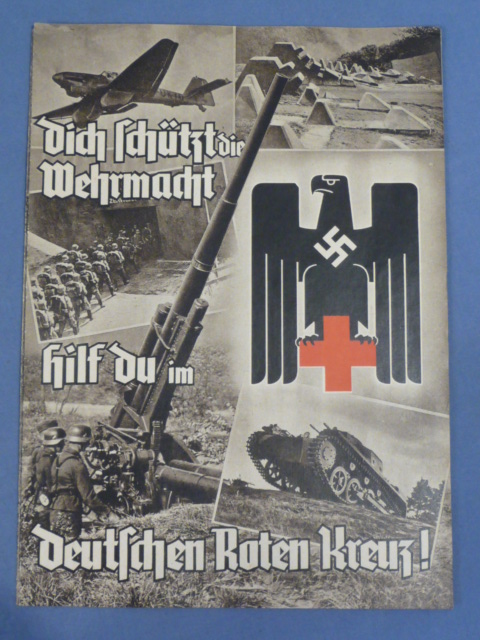
This picture comes from a pamphlet produced during the early part of WWII. In addition to recruiting for the Red Cross, it drew on Hitler’s reputation as a leader by including a note, supposedly personally written by him, on the back cover.
This was an important part of the psychological landscape behind the Third Reich’s propaganda. Under the Nazi Party, Germany was run according to the Führerprinzip, or leader principle.
This idea basically placed Hitler’s word above the law. In most propaganda, he was presented as a glorious leader who would bring the country to greatness. This brochure was thus attempting to build on the strong impression that this fundamental idea would have created in German minds.
6. “War Relief for the German Red Cross: Ready for New Patients!” 1940–1941
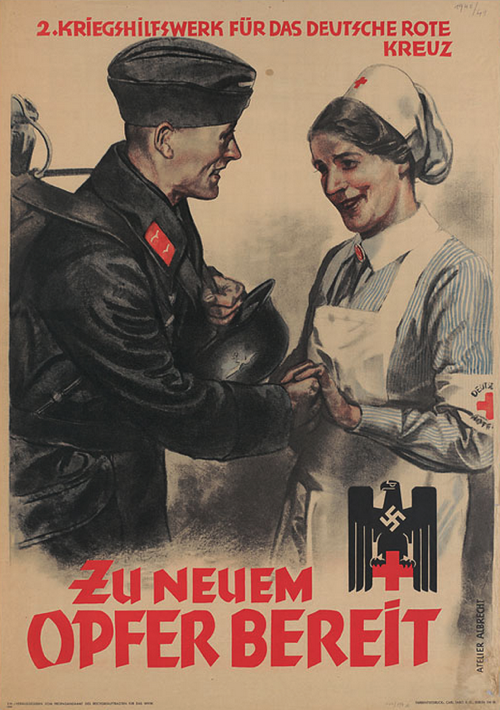
The next poster on our list shows an ordinary nurse receiving thanks from a member of the German military (the Wehrmacht). The German army was often glorified in Nazi propaganda, to the point where the main duty of male inhabitants of the country was seen to be their service in wartime.
Nazi Germany was a totalitarian state in which soldiers spent time in organizations such as the Hitler Youth before joining the army. Some were in the “Jungvolk” from as young as 10, and then they joined the Hitler Youth at age 14, which was compulsory.
As might be expected, the Wehrmacht enforced brutally strict discipline. Officers who failed in battle were likely to be sentenced to death, whilst enlisted men who showed indiscipline could be assigned to penal battalions or turned over to the Gestapo. German soldiers were also required to swear a personal oath of loyalty to Hitler upon completion of their training. This was intended to reinforce the Führer’s direct control over the military.
5. “Also Give to War Relief for the German Red Cross,” 1939–1945
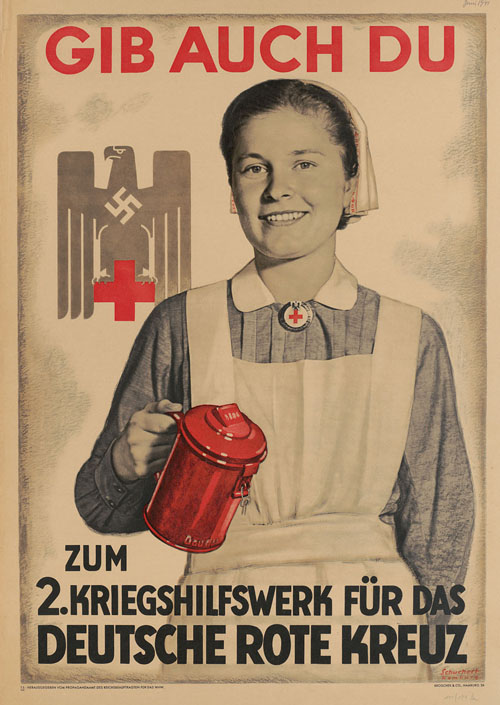 r
r
Published some time during WWII, this next poster depicts a smiling nurse asking for donations for the Red Cross. In Nazi Germany, women were generally expected to marry and become homemakers, but nursing was still a valued profession. In total, around 600,000 DRK nurses served on all fronts.
As the war continued, the necessity of mobilizing all of Germany’s resources resulted in women being drafted in as reserves and support for the army. Female personnel were recruited as auxiliary staff, although they were not usually expected to take part in combat.
4. “Come to the German Sister Service,” Date unknown
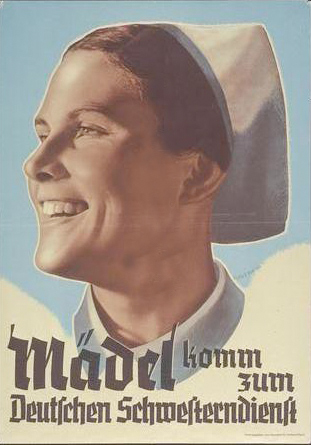
A smiling German nurse is shown in this next poster, together with the caption, “Come to the German sister service.” This seems to have been intended to convey the message that Germany’s citizens were happy under the Nazi regime.
A major theme in Nazi German propaganda was the establishment of a strong Germany, which would be free from outside interference – epitomized by the Treaty of Versailles. This was represented visually through strong and healthy German citizens who conformed to the Aryan physical ideal.
Such themes were also based on eugenic ideas that would find their darkest expression in the concentration camps.
3. “Donate for the German Red Cross,” 1941
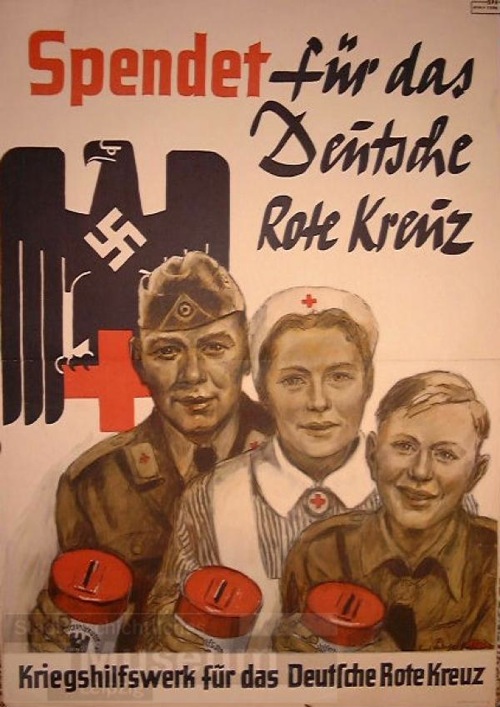
This poster depicts a man, a woman and a boy exhorting their audience to donate to the Red Cross.
Much Nazi propaganda was centered on promoting the idea that families should have clearly defined roles – for example, that women should be concerned with motherhood and men with fighting in the army.
From the smiling expressions on the family members’ faces, we can also assume that the poster was meant to foster happiness in German citizens. The war became difficult for the Nazis after their catastrophic defeats on the Russian front, so propaganda began to emphasize the difficulty of the fighting and the collective nature of the struggle.
2. “The German Red Cross Needs Your Help!” 1939–1945
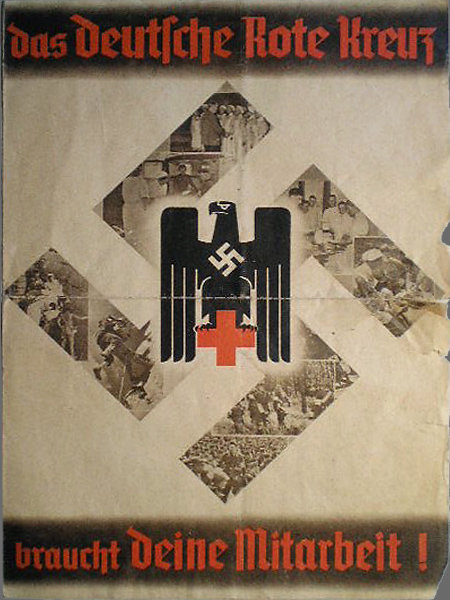
The penultimate poster is an advertisement of the German Red Cross. Despite originally being a charitable organization, the medical service was reorganized under the Nazi government in 1937 and became a tool of the regime.
From that date onwards, the DRK lost all youth services and charitable organizations. What’s more, it became implicated in the worst Nazi crime of all: the Holocaust.
The Nazi plan to exterminate the mentally and physically disabled began at the beginning of WWII and was known as T-4. This seemingly innocuous name was attached to a program that used lethal injections, gassings and even simple starvation to eliminate the handicapped.
Between 30,000 and 200,000 handicapped patients were murdered during the war. What’s more, this program was later used as the basis for the elimination of Jews in Eastern Europe.
Chillingly, nurses were involved with the killings, and many followed the orders from their superiors to murder their own patients. Cowed by the threat of the secret police, these ordinary people had little choice.
One former nurse said, “I only did my duty and I did everything on order of my superiors. The Director Grabowski always warned us of the Gestapo. He said he would inform the Gestapo if we didn’t do what he ordered.”
1. “You Can Also Help! Become a Member of the Red Cross!” 1933–1945
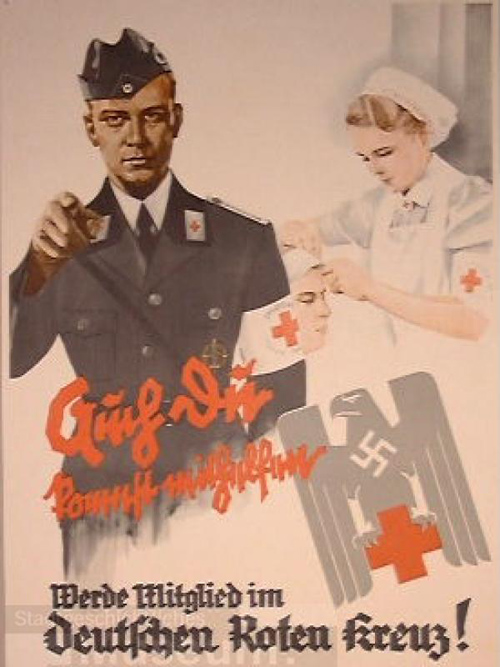
This poster encouraged people to join the DRK. The target audience would presumably have been young women, who would have had few other career opportunities in Hitler’s highly patriarchal new society.
Nursing was seen as being vital to the German war effort. It was also viewed as a glamorous profession and therefore attracted a very high number of young volunteers.
Red Cross members would also largely serve behind the front lines. Hospitals that included female nurses were required to be at least nine miles (15 km) away from the fighting.
Still, frontline soldiers appreciated the work the nurses performed. One combat veteran said, “I was wounded five times and the pretty nurses made me heal much faster!”
 Follow
Follow